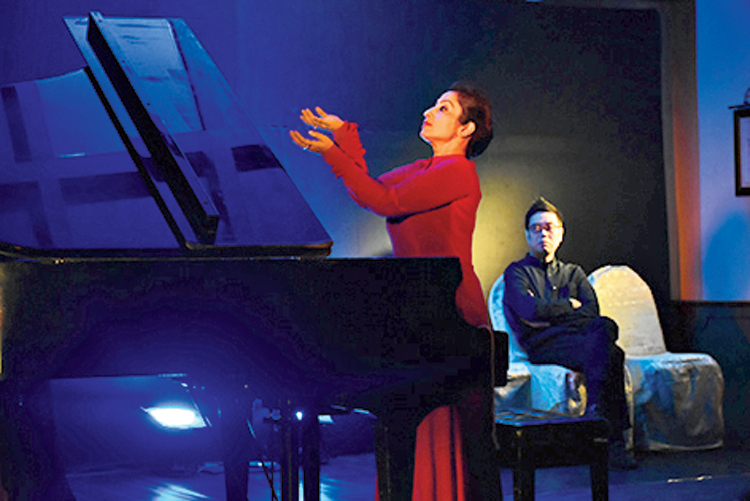An engrossing artistic interaction, titled Three and A Half, amongst two Kathak dancers, a Western classical pianist and his piano — staged at the Bengal Club — offered a rewarding experience. It turned out to be a many-layered conversation in which the artistes explored an audacious range of virtuosities, their curiosity about various aspects of their art stirred by intense exchanges and their own understanding of melody, rhythm and movement enhanced by the interface.
For Takafumi Mori, a pianist of Japanese origin who collaborated with Kathak dancers Debashree Bhattacharya and Sohini Debnath, this work was a journey that they undertook individually and together to have a handle on some of the unknown dynamics of their arts. The Indian classical dancers, for whom mnemonic syllables or familiar music are central to their choreography — each unit of dance must have its own piece of music reserved just for that bit, ready to
be recalled as soon as the relevant fragment is played — it was an opportunity to play with unlimited possibilities of experience and to mould their performance practice for newer goals.
The artistes began the evening with Strangers. Beethoven’s Moonlight Sonata on the piano whispered a story into the dancers’ ears. It was a tale of two people unconnected culturally, geographically, historically or socially, meeting without any premeditated ideas or memories, talking and sharing, disagreeing and dissociating only to ultimately get to know each other better.
In My Muse, the artistes challenge themselves by entering into an uncomfortable zone, the pianist detaching himself from the piano to watch the two dancers “talk to” his instrument although it is foreign to them, even as the piano “feels” vulnerable without the pianist. The answer the artistes seek is whether an experiment like this comes in the way of an aesthetic experience for the audience or is it an enriching encounter nevertheless. Less Than That forays into deeper questions such as whether dancers can make their own music or how capable is the audience in imagining dance movements when they listen to a particular piece of music.
Tightly choreographed, Three and A Half is all about fearless explorations, critical reworkings of practice and seductive and slick articulation.










